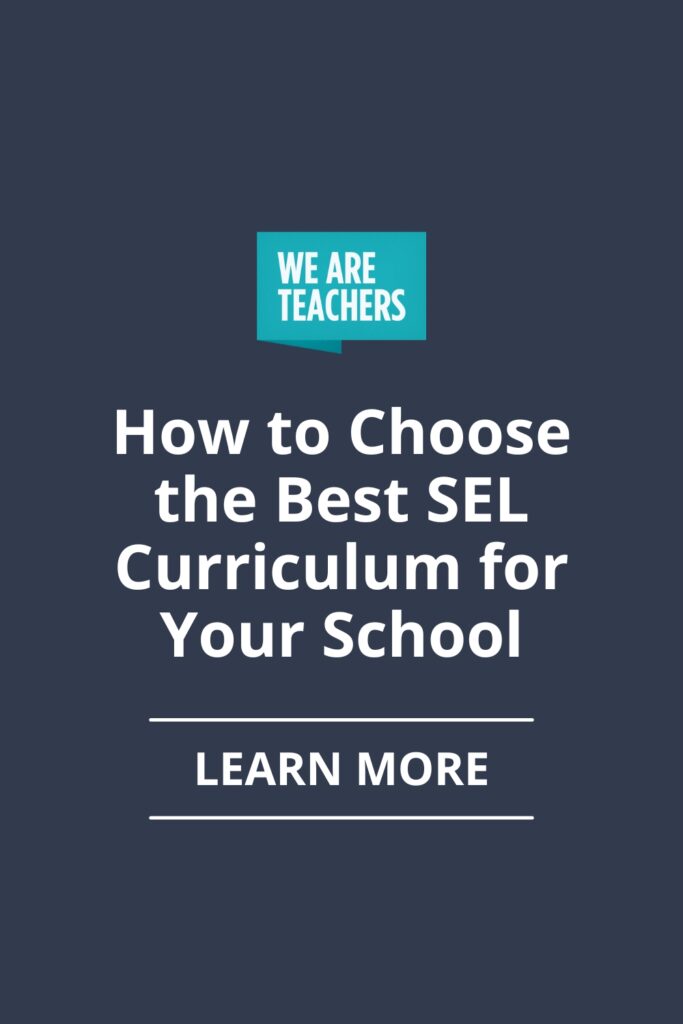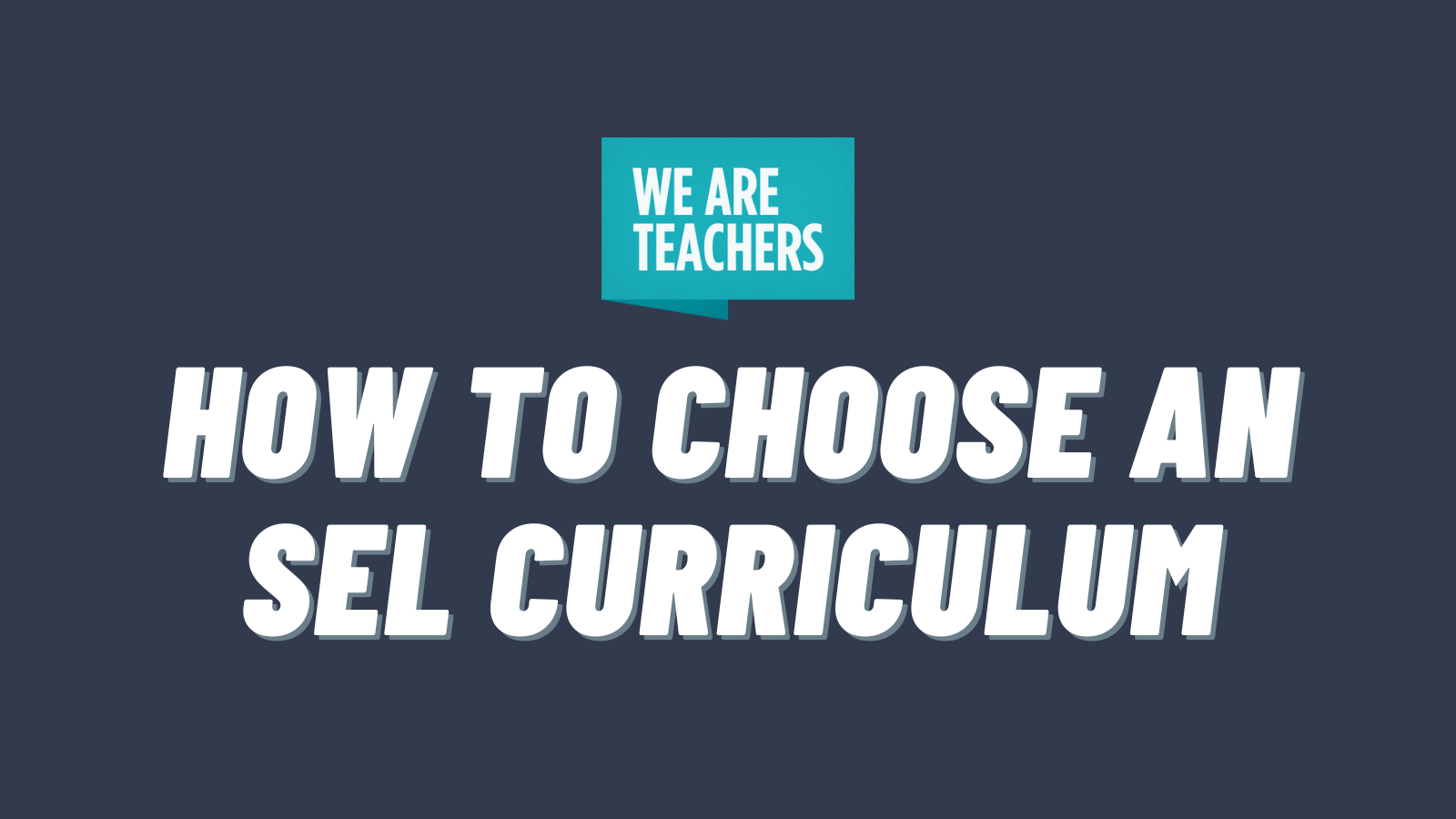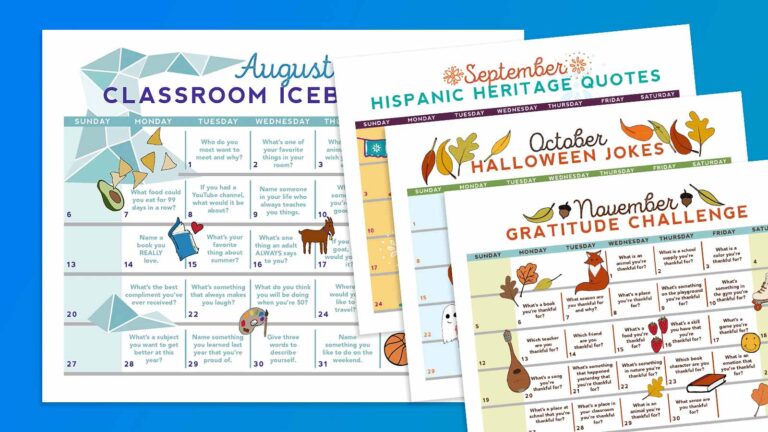Social-emotional learning (SEL) is becoming more popular by the day, as schools work to give students vital soft skills they’ll use throughout their entire lives. These include the five SEL basics: self-awareness, self-management, responsible decision-making, social awareness, and relationship skills. When schools consistently and properly implement a quality SEL curriculum, they generally see academic improvement as well as a reduction in behavior issues.
But not all SEL curriculum programs are alike, and choosing the wrong one can make educators’ jobs harder while not really improving student outcomes. That’s why it’s important to learn what a good SEL program includes and the potential pitfalls to avoid. Use this guide to start the process of finding the right curriculum for teaching social-emotional learning at your organization.
Jump to:
- SEL Curriculum Must-Haves
- Proven Practices for SEL Curriculum Programs
- SEL Curriculum Red Flags
- Tools and Resources for Choosing an SEL Curriculum
SEL Curriculum Must-Haves
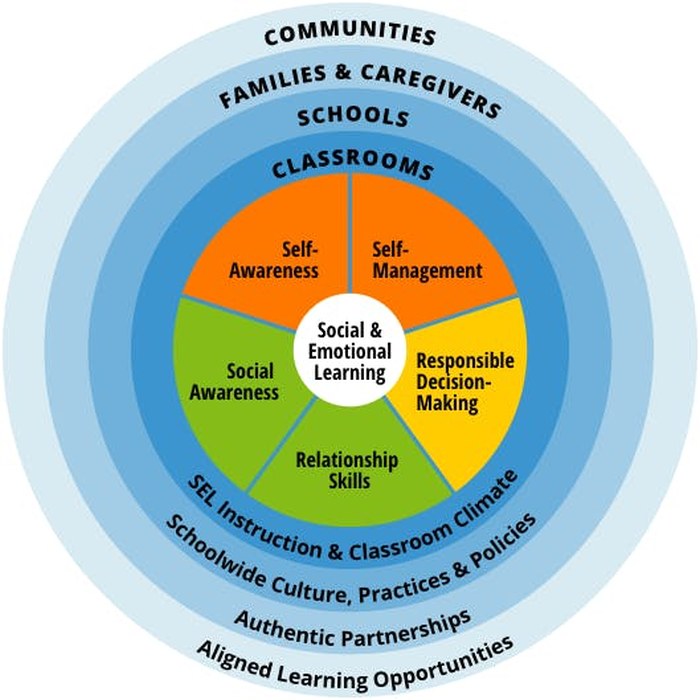
Committing to a social-emotional learning program takes time, money, and other valuable resources. Make it worth the effort by ensuring the curriculum you choose has these characteristics.
Evidence-Based and Effective
A strong SEL program is grounded in the latest research on child development and social-emotional learning competencies. It should be backed by scientific studies that clearly show positive results across a wide student audience. Don’t be afraid to ask more about the research an SEL curriculum is based on, or to look closely at data on results in different organizations and communities.
Multi-Year and Growth-Oriented
It’s absolutely vital to understand that SEL isn’t a “one and done” kind of thing. Instead, the best SEL curriculum programs start at the earliest ages, building on learning over time. They include progressive goals and supporting activities tailored by age, grade level, or competency.
In other words, students shouldn’t expect to see all the same activities over and over again each year (though some aspects of a program will be consistent over time). Instead, they’ll learn new skills or dive deeper on some of the SEL competencies they’ve addressed in the past.
Relevant to Your Needs
Before you even begin choosing a program, start by assessing your organization’s needs. Learn more about your students’ current social-emotional competency levels, and find out what teachers think would help support your learning environment the most.
Learn how to assess social-emotional learning here, and establish a baseline before shopping around for an SEL program. Then, choose a program that has teacher, parent, and community buy-in. SEL programs work best when everyone is on board, so give your teachers and parents a chance to speak up on what they’d like to see in a program.
Be sure to understand your organization’s overall desired outcomes, so you can find an SEL curriculum that addresses those specifically. Perhaps most importantly, ensure the program you choose embraces your community and student diversity and provides equitable learning opportunities for all.
Supports Teachers
We can’t stress enough how vital this is. Teachers have demands coming at them from all sides, with new expectations every day. If your SEL program doesn’t provide adequate training and long-term support for teachers, it simply won’t work. More than that, the best SEL curricula provide social and emotional support for teachers themselves. And they do this without demanding a huge investment of time and energy that teachers can’t really afford to waste.
Proven Practices for SEL Curriculum Programs
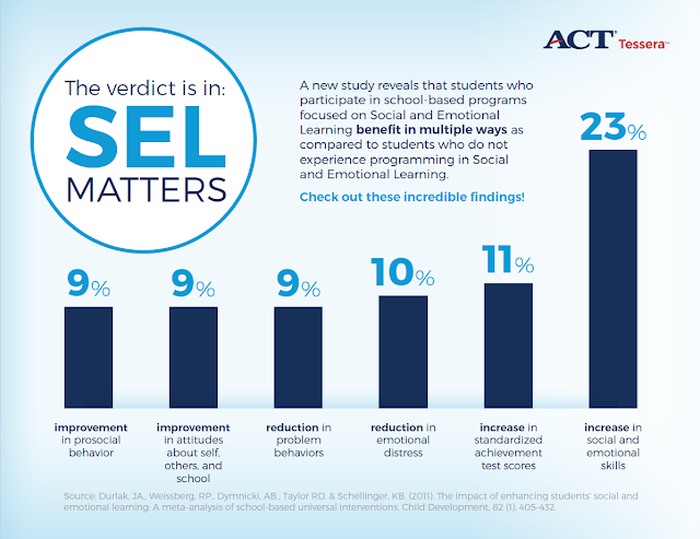
As you narrow down the pool of potential programs, assess each for practices proven to be effective by research. Some of these practices might include:
Full Integration
Social-emotional learning shouldn’t be separate from academic learning. Instead, a good SEL curriculum integrates the two. Students complete some activities that are specific to SEL competencies. But they’re also expected to apply those competencies in their school and classroom communities during academic and social activities. Teachers should reinforce SEL competencies during math or reading lessons, recess, or even in the halls between class.
That means choosing and implementing a program consistently across grade levels, making SEL a whole-school priority. Instead of making SEL one subject on the schedule, it becomes a regular part of the daily learning community as a whole. School leadership, teachers, and support staff are an active part of the program every day.
Continuous Improvement
Like so many skills, social-emotional learning doesn’t happen overnight. As kids grow and mature, they develop their SEL abilities a bit at a time. A good SEL program recognizes slow but steady improvement across the board, with each grade’s curriculum building on what came before.
Schools shouldn’t necessarily expect to see massive changes in a single academic year. SEL implementation takes time and commitment, but small changes can add up to big success in the long run.
SAFE Learning Opportunities
Researchers have found that the best SEL learning is SAFE:
- Sequenced: Activities build on each other over time, from lesson to lesson or year to year.
- Active: Students have the chance to put their learning into practice on a regular basis.
- Focused: Activities focus on specific skills and SEL competencies (learn more about SEL competencies here).
- Explicit: The skills and SEL competencies for each activity are named and defined, ensuring a valid purpose to every part of the program.
Range of Strategies
There’s no single SEL strategy that works for every school, teacher, or student. If the program you’re considering focuses on only one or two learning strategies, it’s unlikely to meet your diverse student population’s needs. Look for an SEL curriculum that offers options to reach every kind of learner, such as:
- Freestanding SEL lessons and activities that support all learning styles
- Methods for integrating SEL into academic learning
- Team and community-building initiatives
- Student leadership opportunities
- Helpful tools like checklists, tool kits, and scripted lessons
- Adaptive strategies for specific needs (such as ELL, special ed, etc.)
Professional Development
As we’ve already noted, teachers need training and support if you want to make the most of your SEL curriculum investment. The program should include an implementation plan that includes professional development for teachers and administrators at all levels. It should also have a plan for supporting teachers throughout the year as they bring the program to students. This doesn’t need to be incredibly time-consuming—but it should be clear and detailed enough to answer teacher questions as needed.
Teaching SEL means modeling the right behaviors, so a really strong SEL curriculum offers teachers the chance to learn too. They may explore more about child development or SEL competencies in workshops or online modules. Or they might participate in a program designed to help support their own social and emotional needs as educators. Just ensure the program you pick doesn’t just dump everything into teachers’ laps and expect them to figure it out on their own.
Family and Community Support
As teachers know all too well, it doesn’t help to teach kids healthy SEL behaviors in the classroom only to have them fall back into bad habits once they leave school grounds. Select a program that brings parents, families, and even the community into the process. That might mean a workshop for families to attend, or activities students can complete with their parents or guardians. These things should be built into the SEL program, rather than something schools have to design on their own.
Outcome Monitoring
If an SEL program makes you promises about results, they need to offer a way you can monitor those expected outcomes. Look for SEL curriculum offerings with regular data collection and assessment tools that are useful to your organization’s needs. Learn more about SEL assessment tools here.
SEL Curriculum Red Flags
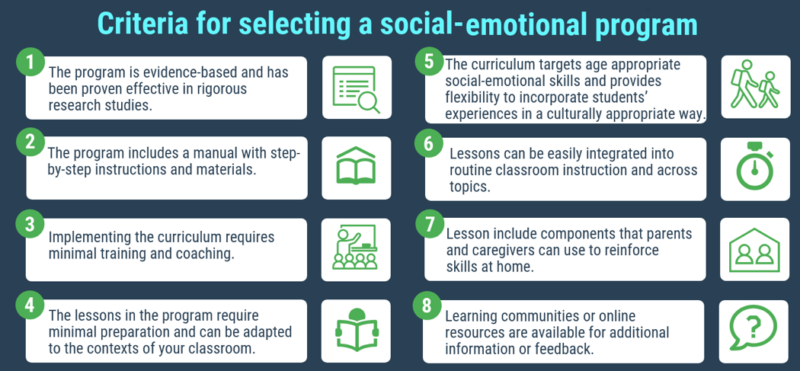
Now that you have some idea of what to look for, here are some pitfalls to avoid.
Non-Evidence-Based Programs
If a program can’t offer any research to back up its claims, steer clear. Even a new SEL curriculum should be able to point to the child development research they’re basing their program on.
Promises Like “Fast” or “Easy”
Implementing SEL properly and responsibly takes work, for students, teachers, and families. It can be time-consuming, especially in the early stages of implementation. So instead of looking for fast, easy answers, seek out programs that offer customized support solutions for your staff when they face challenges.
Non-Integrated Programs
A stand-alone SEL curriculum that isolates social-emotional learning as a single subject is unlikely to give your school the results it really wants. Look for programs that provide ways to integrate social-emotional learning throughout your school environment.
Lack of Assessment
Be sure you’ll be able to gather useful and reliable data from the program, so you can regularly evaluate its effectiveness. Well-designed assessments should be built into any SEL curriculum.
Tools and Resources for Choosing an SEL Curriculum
If you’re feeling overwhelmed by all the considerations involved in choosing an SEL program for your organization, you’re not alone. With so many curriculum options to pick from, it’s hard to know where to start. These trusted resources can make the process a little easier.
CASEL Program Guide
The Collaborative for Academic, Social, and Emotional Learning (CASEL) is one of the leading experts in SEL. They have an enormous collection of resources to help support your school’s SEL journey, including their comprehensive program guide. They’ll help walk you through the process to establish your SEL goals, then identify the programs that meet your needs.
Harvard University Explore SEL
Find smart tools for comparing program frameworks and skill focus, plus handy resources like the ability to see the different terminologies SEL programs use refer to various skills.
More SEL Curriculum Resources
- Social-Emotional Learning Curriculum: 20+ Leading SEL Programs
- Navigating SEL From the Inside Out (Wallace Foundation)
- Top SEL Curriculums Recommended by School Social Workers
Looking for more tips and advice on choosing the best SEL curriculum for your school or district? Join the conversation in the We Are Teachers HELPLINE group on Facebook.
Plus, Simple Social-Emotional Learning Activities for All Ages.
